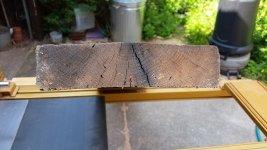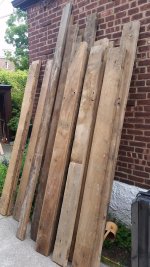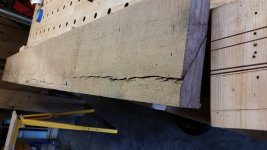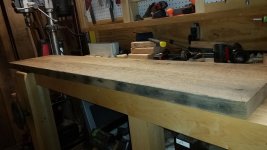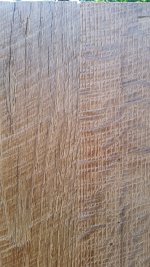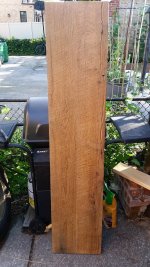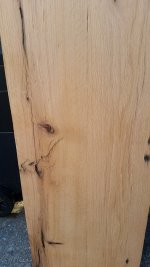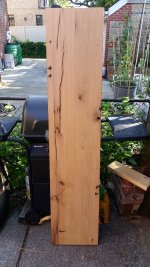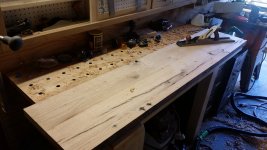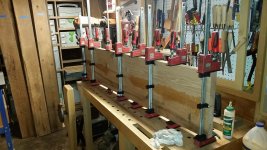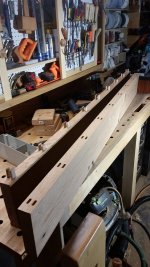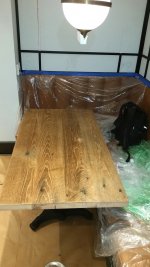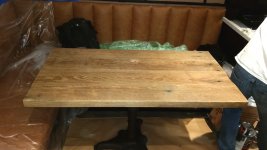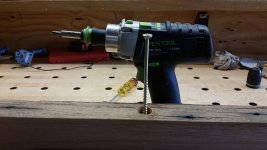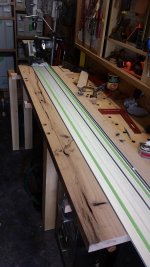ear3
Member
I took delivery yesterday of the reclaimed oak beams out of which I've been commissioned to build some countertop and shelving. They are rough sawn 8/4. I will be thickness planing one side to reach spec-ed thickness of 1 1/2 to 1 3/4 for the various pieces I have to build.
View attachment 2
Question: since the beams max out at 2x8, I'm also going to have to edge join to hit the spec-ed depth of the countertop and some of the shelving. So after jointing/planing one face flat and to thickness, I'll rip the edges with the tracksaw and use some dominoes for the glue up. Many of the beams are reasonably flat, but there are some that have become cupped:
View attachment 1
In terms of which rough side to preserve, does it make a difference for the edge joining and long term stability of the combined plank whether I preserve the convex or concave face of those boards that are cupped? When I domino, I will be referencing off the already jointed edge, so I'm not worried about the cupping messing up my mortise angles. Basically, if I were to edge join two cupped boards, should it look like a "w" or an "m"
View attachment 2
Question: since the beams max out at 2x8, I'm also going to have to edge join to hit the spec-ed depth of the countertop and some of the shelving. So after jointing/planing one face flat and to thickness, I'll rip the edges with the tracksaw and use some dominoes for the glue up. Many of the beams are reasonably flat, but there are some that have become cupped:
View attachment 1
In terms of which rough side to preserve, does it make a difference for the edge joining and long term stability of the combined plank whether I preserve the convex or concave face of those boards that are cupped? When I domino, I will be referencing off the already jointed edge, so I'm not worried about the cupping messing up my mortise angles. Basically, if I were to edge join two cupped boards, should it look like a "w" or an "m"

